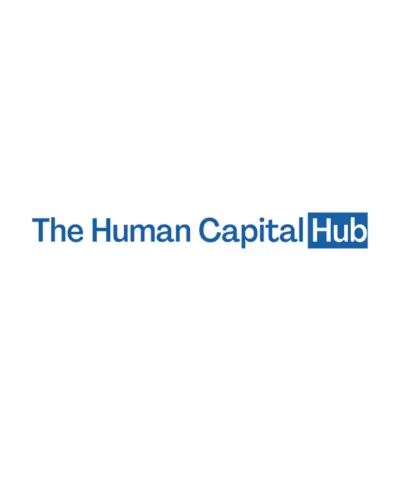A résumé is more than an inventory of completed tasks; it is a promise of future value. That promise lives in the competencies—the lasting combinations of knowledge, skill, and attitude—embedded inside every accomplishment. When those competencies surface, recruiters see beyond present-day duties to tomorrow’s possibilities.
The pages that follow present a hands-on method for translating tasks into forward-looking statements, building an ATS-friendly talent matrix, and closing the loop between hiring aspirations and workplace reality. Whether the objective is to recruit talent or to market personal expertise, these techniques turn the CV from a static record into a living map of growth potential.
Why Competencies Belong on Every Modern Résumé
Close your eyes and picture the classic résumé pile: sheaves of paper or PDF thumbnails stacked like identical playing cards. The words blur together—“managed,” “led,” “responsible for”—until every candidate sounds like the same gray silhouette. Competency-based writing splashes color back onto the page by describing not only what happened, but how it happened, under which constraints, and with what measurable impact.
Competencies also travel well. Technical skills expire quickly—sometimes in less than eighteen months—but underlying abilities such as analytical reasoning, stakeholder empathy, and structured problem-solving outlast any single technology wave. Employers that make smarter hiring decisions start with skills rather than outdated check-box qualifications consistently surface adaptable talent.
Picture a bustling product-management bullpen at a growth-stage startup. Road maps shift weekly, and yesterday’s feature list is tomorrow’s backlog. The hiring manager cares less about familiarity with a specific analytics tool and more about learning agility, negotiation stamina, and cross-functional collaboration. A competency-rich résumé reveals those adaptation muscles at a glance, turning the candidate from a gray silhouette into a vivid figure who can keep pace with change.
Finally, competencies offer recruiters a shared language. Global organizations often maintain a library of behavioral indicators—phrases such as “drives results” or “cultivates collaboration”—each tied to leveling guidelines. When a CV speaks that language, it drops neatly into calibration meetings, speeds up interview design, and reduces bias. By weaving competencies into every bullet point, a candidate hands recruiters the exact vocabulary needed to advocate for that hire inside the organization.
Reverse-Engineering a Role’s Competency Framework
Before writing to competencies, identify which competencies matter. Treat every job posting like an artifact: a clue to the culture that produced it. Three careful passes through the ad reveal the framework.
First, highlight every verb describing ongoing work—“orchestrate,” “negotiate,” “analyze.” Second, underline adjectives and adverbs hinting at intensity or complexity—terms such as “cross-functional,” “rapid,” or “data-driven.” Third, circle explicit references to behavioral strengths: “resilience,” “strategic thinking,” “customer obsession.”
Compare those annotations with published frameworks such as the Lominger Career Architect or the SHL Universal Competency Framework. Patterns emerge quickly. Roles heavy on verbs like “design” and modifiers like “human-centered” usually prize empathy and iterative learning. Positions that trumpet “optimize” or “streamline” often hinge on process discipline and continuous improvement. Recruiters who follow these patterns stay aligned with evolving skills-first hiring priorities in 2024 that now eclipse pedigree credentials.
Distill the list to three to five core competencies. A résumé that tries to prove twenty behaviors proves none; a résumé that proves four creates a narrative arc. Each successive job should deepen or broaden the same repeatable capabilities, turning passive screening software into a surprisingly lucid conversation partner.
Recruiters applying the same exercise can pressure-test the posting itself. If no clear competencies surface, the advertisement may need revision before it reaches the market. A clear framework serves both sides of the hiring desk, aligning expectations long before interviews begin.
Turning Tasks Into Future-Proof Bullet Points
Competency targets in hand, convert raw task statements into evidence-rich, forward-looking bullets. A simple three-layer exercise does the job:
● Start with the literal task.
● Add the competency action that powered success.
● Finish with a measurable outcome that hints at future scale.
● Task: “Managed monthly financial reporting.”
● Competency layer: “Applied data-storytelling to translate variances for non-finance stakeholders.”
● Outcome: “Shortened decision cycles by 30 % and unlocked $1.2 million cost avoidance.”
The final sentence paints a runway: data-storytelling can accelerate decisions in any context, not just finance. Another illustration reads, “Championed collaborative negotiation, onboarding 12 new suppliers in 90 days while increasing service-level compliance by 15 percentage points.” The measurable uptick signals that the same behavior can scale procurement gains elsewhere.
Career advice columns now emphasize the importance of aligning resume networking strategies with ATS optimization, ensuring achievements appeal to both recruiters and automated systems. When fine-tuning phrasing, keep in mind that today’s applicant tracking systems analyze each bullet point for clear syntax. To maintain readability, steer clear of complex sentence structures or excessive conjunctions—concise statements consistently outperform lengthy ones. For best practices on layout, typography, and keyword usage, refer to guidance on formatting an ATS-friendly CV.
Building a Talent Matrix Inside the ATS
Recruiters can move from résumé to structured data by creating a grid: candidates in rows, competencies in columns, and evidence scores in the intersecting cells. Leading ATS platforms—Greenhouse, Lever, SmartRecruiters—make scorecard customization straightforward. Resources such as the SHRM toolkit on skills-based hiring detail the steps for converting résumé bullets into measurable grid scores.
The magic appears when business priorities overlay the grid. Suppose a company intends to expand into Latin America during Q4. Filtering the matrix for “cultural adaptability” and “multilingual communication” at a proficient level or higher elevates the right profiles, even if job titles differ. The approach outperforms keyword searches because it captures transferable behaviors rather than brittle jargon.
A four-competency grid—customer empathy, learning agility, systems thinking, and collaborative execution—once expedited interview processes by 70 percent in a SaaS case study. Hiring funnels behave like optical lenses; competency alignment focuses the beam.
Concerns about additional scoring time diminish after a single hiring cycle. Early analysis may feel heavier, yet the matrix reduces misaligned interviews and shortens post-interview debriefs. What begins as extra work becomes an efficiency engine, freeing recruiters to spend more minutes in high-value conversation with viable candidates.
Linking competencies to interview questions
After the grid exists, craft one behavioral question per competency: “Describe a time data-storytelling persuaded a resistant stakeholder.” Logging answers against the same cells closes the data loop. Candidates experience continuity between résumé language and interview dialogue, reinforcing authenticity while giving assessors clean evidence.
Competency-Driven Onboarding and Retention
The new hire walks into a conference room on day one, laptop still warm from IT imaging. Instead of the usual slideshow of department org charts, a personalized growth map awaits—each competency highlighted with stretch projects, mentors, and curated resources. Leaders who adopt simple strategies for new hire onboarding translate these maps into early-career momentum that endures.
Research by the Brandon Hall Group reports that strong onboarding increases new-hire retention by 82 percent and productivity by more than 70 percent. When onboarding references the exact competencies celebrated during selection, the psychological contract tightens further. Employees recognize continuity between hiring criteria and daily expectations, softening the jolt many feel when recruitment materials fade.
Retention outcomes follow. A longitudinal survey across three mid-market firms revealed a telling metric: employees who could name at least two of their own core competencies six months into the role were 1.8 times more likely to envision a long-term career with their employer. Competency clarity becomes career clarity.
Managers sustain that clarity through lightweight rituals. Monthly one-on-ones can reserve five minutes for “competency spotlights,” celebrating behaviors demonstrated in recent work. Performance reviews might pivot from evaluating discrete deliverables to discussing how core behaviors evolved—or were blocked. Because competencies are language-agnostic, the practice travels neatly across cultures and geographies, knitting global teams together under shared behavioral banners.
Common Pitfalls and Troubleshooting Tips
Even experienced writers stumble when shifting from task-based to competency-based résumés. A few missteps and remedies stand out:
- Trap: Over-stuffing bullets with three or more competencies. Fix: Highlight the strongest behavior, reserving secondary ones for another bullet.
- Trap: Omitting metrics entirely (“supported marketing initiatives”). Fix: Attach even a micro-measure—percentages, response times, engagement lift—to spotlight impact.
- Trap: Using abstract nouns without evidence (“possesses leadership”). Fix: Convert to a verb-plus-result construct (“led a six-member pod that released a feature lifting daily active users by 12 %”).
Following a skills-based talent practices roadmap prevents writers from bloating bullets with irrelevant behaviors, while ignoring competency clarity often funnels employees into performance improvement plan cautionary trends that signal disengagement rather than support.
When troubleshooting, read each bullet aloud. If breathing stops before the period, trim. If a stranger cannot tell whether the achievement could repeat in a new environment, add context. And if two bullets sound interchangeable, merge them; redundancy dulls the shine. Authenticity beats exhaustiveness every hiring season.
Conclusion
Competency-based résumé writing bridges the gap between yesterday’s accomplishments and tomorrow’s ambitions. By unearthing the behaviors beneath tasks, layering measurable outcomes, and aligning everything with a role’s framework, the CV transforms into a kinetic portrait of potential.
Recruiters enjoy shorter time-to-hire and stronger new-hire stickiness, while job seekers tell a story that does not end at “hired” but stretches deep into career growth. The journey from résumé to retention starts with one deliberate choice: write to what can become, not only to what has been.



